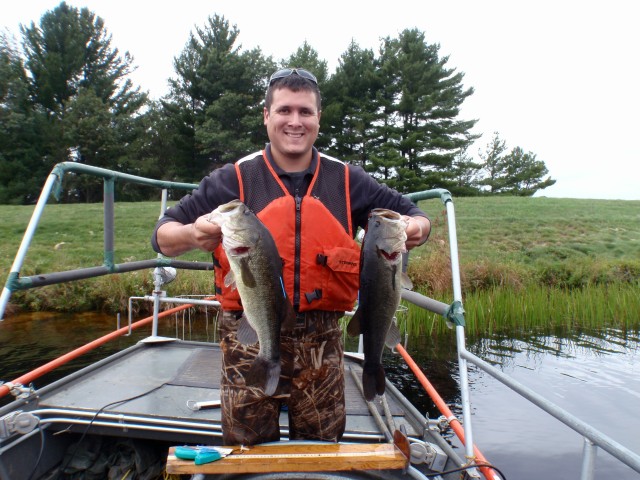
FORT McCOY, Wis. -- Relocating fish from Fort McCoy waters will support re-stocking efforts for Lake Tomah (Wis.) while also improving the number of larger fish available for Fort McCoy anglers, said John Noble.
Noble, Fort McCoy Fisheries biologist, said the fish currently are being held in a holding pond at Fort McCoy's Whitetail Ridge Ski Area. Largemouth bass were removed from the North Flowage and bluegills were collected from Stillwell Pond in a coordinated effort between Fort McCoy, contracted Colorado State University employees, the Wisconsin Department of Natural Resources (WDNR) and the U.S. Fish and Wildlife Service (FWS).
"The fish will be tested by FWS to certify their health before the WDNR moves them to Lake Tomah," Noble said. "Testing for fish viruses like VHS (viral hemorrhagic septicemia) takes up to 45 days so we expect to hear if the fish are disease free and okay to stock in November."
These fish will support WDNR efforts to repopulate Lake Tomah following a 2009 fish population project that was used to eradicate carp.
Noble said the largemouth bass removed from the North Flowage typically were less than 15 inches in length. The smaller bass were targeted because they are overabundant and exhibit slow growth patterns. Anglers were encouraged to take more bass under 15 inches to help reduce numbers of small largemouth, which was expected to reduce competition for food and improve growth, he said.
Anglers interviewed at Fort McCoy said they generally release the smaller bass and did not express interest in having larger bag limits for the smaller-sized largemouth, Noble said.
"So we decided to remove the smaller bass for WDNR fish-stocking projects, and even though smaller, these mature bass will be great as brood stock to raise young bass for other Wisconsin lake-stocking requirements," he said. "We kept the bigger bass in the North Flowage, as they are capable of eating larger forage/prey like bluegills, which will, in turn, help improve or maintain the balance of the bluegill population. Therefore, we have a quality bluegill fishery - essentially keeping the bluegill numbers lower - so they, too, can grow to a larger size because we reduced the competition for food."
"We expect about 100 largemouth bass and at least 1,000 bluegill will be donated to Lake Tomah as a result of the fish-removal projects," Noble said.
The donation of fish will help support the Army Community Covenant by providing more recreational opportunities in Tomah, Noble said.
Fort McCoy had provided bluegills to Lake Tomah about 11 years ago to help increase fish population, as well.

Social Sharing